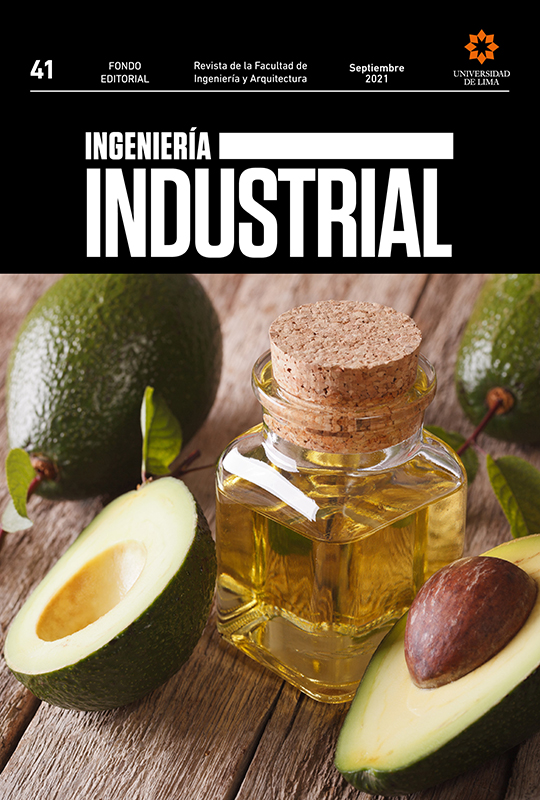Process analysis of a production line of aircraft turbine components
DOI:
https://doi.org/10.26439/ing.ind2021.n41.5540Keywords:
production capacity, processes, cycle time, aeronautical industryAbstract
The particular situation of the aeronautical industry in the coming years will force related manufacturing plants to analyze their production processes seeking, among other things that could be remarkable, greater flexibility and efficiency. This article analyzes the manufacturing process of a production line of aircraft turbine components, which faced flow and production capacity problems. The study used the methodology applied by Okutmuş et al. (2015) for data collection, and subsequently, resorted to the methodology used by Molano & Materón (2018) to analyze of the information. Finally, it concludes that production capacity could be increased. Therefore, realistic proposals on the case are presented, which allow improvements in its capacity in the near future.
Downloads
References
AIRBUS. (9 de junio del 2018). Global Market Forecast 2017-2036. http://www.airbus.com/aircraft/market/global-market-forecast.html
Arango-Serna, M. D., Campuzano-Zapata, L. F., y Zapata-Cortes, J. A. (2015). Mejoramiento de procesos de manufactura utilizando Kanban. Revistas Ingeniería Universidad de Medellín, 221-234.
Corbetta. (2007). Metodología y Técnicas de Investigación Social. McGraw Hill.
De León, N. (2021). Industria aeroespacial genera 15 mil empleos directos en Mexicali. El Imparcial. https://www.elimparcial.com/tijuana/dinero/Industria-aeroespacial-genera-15-mil-empleos-directos-en-Mexicali-20200525-0003.html
Engineers Edge. (2018). Heat Treatment - Stress Relieving. https://www.engineersedge.com/material_science/heat_treatment__stress_relieving_12886.htm
Hernández-Pólito, A. (2013). Motivación, satisfacción y desempeño laboral en organizaciones públicas y privadas. ANFECA.
Kiran, D. R. (2016). Total Productive Maintenance. En D. R. Kiran, Total Quality Management: Key Concepts and Case Studies (pp. 177-192). Butterworth-Heinemann.
Luna-Puente, R., Guerrero-Aguirre, J. D., Contreras-Amezquita, E., y Moreno-Villanueva, E. (2010). Análisis del proceso de fabricación de cuellos de camisa. TECNOCIENCIA Chihuahua, 39-47.
Molano, A. F., y Materón, C. (2018). Reducción del tiempo de ciclo para el aumento de la productividad en el proceso de elaboración de concentrado para gallinas ponedoras. [Trabajo de grado Ingeniería Industrial, Universidad de San Buenaventura]. http://bibliotecadigital.usb.edu.co/bitstream/10819/5545/1/Reduccion_Tiempo_Ciclo_Molano_2017.pdf
Okutmuş, E., Kahveci, A., y Kartašova, J. (2015). Using Theory of Constraints for Reaching Optimal Product Mix: An Application in the Furniture Sector. Intellectual Economics, 138-149.
Ortiz-Triana, V., y Caicedo-Rolón, A. J. (2015). Procedimiento para la programación y control de la producción de una pequeña empresa. Ingeniería Industrial, 14 (1), 89-104.
Robles Rodríguez, V. M. (2012). Propuesta de mejoramiento del proceso productivo de los cereales en la empresa Big Bran S. A.S. a partir de la implementación de la Teoría de Lean Manufacturing.[Tesis de Grado. Pontificia Universidad Javeriana]. http://hdl.handle.net/10554/15046
Rocha, H., Pinto, L., y Silva, F. (11 al 14 de junio del 2018). Analysis and Improvement of Processes in the Jewelry Industry. 28th International Conference of Flexible Automation and Intelligent Manufacturing (FAIM2018), Columbus, OH, USA. Procedia Manufacturing, 640-646.
Semprún, A. (2021). La industria aeronáutica superará el COVID en el 2026 tras reducirse un 20 % la flota. El Economista. https://www.eleconomista.es/empresas-finanzas/noticias/11094886/03/21/La-industria-aeronautica-superara-el-Covid-en-2026-tras-reducirse-un-20-la-flota.html
Tao, F., Qi, Q., Liu, A., y Kusiak, A. (2018). Data-Driven Smart Manufacturing. Journal of Manufacturing Systems, 48, 157-169.



